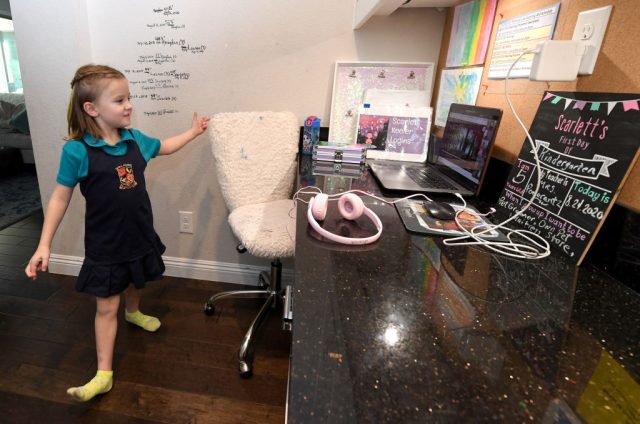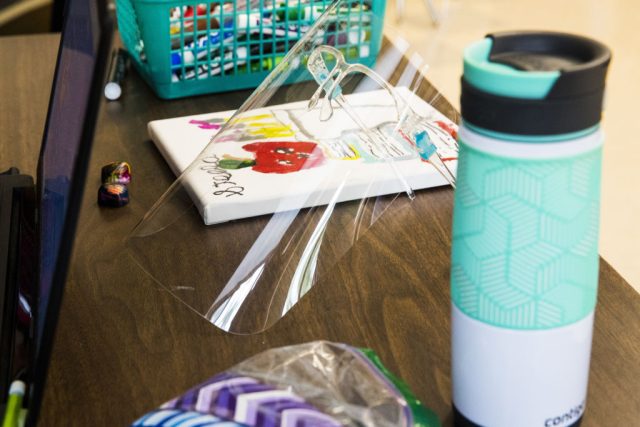
For parents and teachers in the US, August usually means getting ready for the school year to start—finalizing lesson plans, making sure all the school supplies are on hand, and possibly buying a rapidly growing kid a new wardrobe. In the face of a global pandemic, however, getting ready for school means something entirely different. It starts today with buying face masks and checking whether the school buildings have been reworked to enable socially distanced learning.
That's assuming the schools reopen at all, of course. Under the best of circumstances, that would be a difficult decision, involving weighing the availability of extra staff, funding for facilities changes, and competing interests in child development and physical health. But the whole question has now become a partisan political issue, driven by an ill-informed president making a big push to reopen schools.
With all that noise, it's undoubtedly difficult for parents to even figure out what factors they should consider when making decisions for their children. To try to help, we've looked over guidelines from the Centers for Disease Control, National Academies of Science, the World Health Organization, and other expert groups, and we've found there's a general consistency in their advice. What follows is an attempt to summarize both the considerations that motivate this advice, as well as the factors these experts suggest people keep in mind when making decisions about in-person learning this fall.
The case for school
Why bother with schools at all in the face of a global pandemic? While keeping them shut would clearly minimize risk, there are definite costs to it. An obvious one is education. Losing a year—or even having a year interrupted by sporadic periods in quarantine—doesn't just mean the loss of that year's material. Effective educational standards structure each year so that it builds on the information conveyed to students in the previous year. Having a badly disrupted year means that students will be at a disadvantage the year following. And simply skipping the year will create chaos in college and professional schools years later due to the highly structured educational pipeline.
It might be possible to reconstruct some aspects of classroom time remotely. But there are simply many teaching activities that require school facilities to happen: think chemistry labs and gym classes. And there's a lot about the school environment that allows teachers to work more effectively but won't be possible in a remote environment. In actual classrooms, teachers can observe how students perform their work or how they interact with other students, and teachers can use that information to instruct individual students more effectively.
The substitution of remote learning will have limitations. Not every teacher will be adept at the technique or technology required to run remote classes effectively. And not every student will have access to the technology needed to make things work. This is especially true among underprivileged students, raising the risk that going remote may exacerbate the educational inequalities that already exist.

But there are a number of reasons beyond education where reopening schools can have value, as schools provide a lot of critical social services. Schools act, in part, as day care for working parents. For underprivileged families in the US, they can be an important source of food. For students with special needs, there are often services that are only available to them at schools.
Finally, an important part of education is simply the interactions that take place among the students. This is especially true for younger students, as the report from the National Academies describes: "In grades K-3, children are still developing the skills to regulate their own behavior, emotions, and attention, and therefore struggle with distance learning." (The report takes that to its logical conclusion, stating, "Schools should prioritize reopening for grades K-5.") Learning to interact and cooperate with peers helps with the process of learning how to regulate behavior and emotions. And, while this is most critical for the youngest students, emotional learning continues through college.
On the other hand...
Given all those critical functions of schools, it's not a surprise that lots of people are advocating for finding a way to open them. Most of them, with the notable exception of the president, tend to clarify that with a critical caveat: they should if communities can find a way to open them safely. To understand what "safely" means in this context, we have to understand the risks posed by the COVID-19 pandemic.
One key aspect of that is the direct risk to the health of children. On the plus side, it's clear that young children generally have very few symptoms when infected, and often they clear the infection without ever noticing any symptoms. The lack of symptoms also provides ancillary benefits, given that there seems to be a risk of long-term damage as indicated by lingering symptoms. This doesn't mean there is no risk to young children, but the number of severe cases and deaths in this population is extremely low compared to all other age groups. It's also important to emphasize, however, that some students may have health issues that do put them at risk.
One of the problems with evaluating risks here is that, once people reach their teens, they seem to face similar dangers to those of young adults. We don't have a really good grip on exactly when this transition takes place, though Emory University's Wendy Armstrong, summarizing data at a recent webinar, said evidence is mounting that it seems to be around the age of 10. Although we still don't understand why, risks are definitely higher in older students, which changes the considerations. It's worth noting that the start of elevated risk roughly corresponds to the age at which it becomes less critical for young students to engage in in-person learning, as described in the National Academies' report.

But children aren't the only ones who are present at schools; teachers and staff need to be there for the system to function, and many of them are in high-risk groups. In fact, there have been situations where staff spread the virus among themselves before the students even arrived. If students can also spread the virus, then the risk to the staff grows considerably. Initially, a few studies of small populations had suggested children were less likely to pass on the virus. Since then, however, further work indicated that even young children can carry high levels of the virus. While the relative risks aren't well understood yet, it's clear there are risks.
Finally, it's also notable that the combination of few symptoms and lots of virus raises the risk for schools as a whole, as infected students who feel well are more likely to engage in normal activities, and thus increase the chances they'll expose their peers and school staff to the virus.
reader comments
229